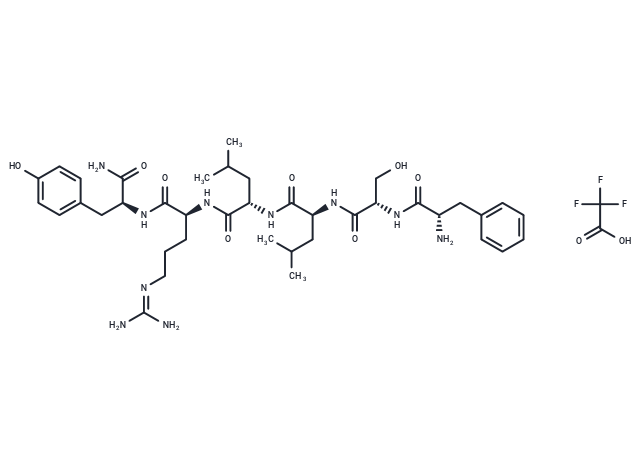Shopping Cart
- Remove All
 Your shopping cart is currently empty
Your shopping cart is currently empty


| Pack Size | Price | Availability | Quantity |
|---|---|---|---|
| 1 mg | $98 | In Stock | |
| 5 mg | $183 | In Stock | |
| 10 mg | $277 | In Stock | |
| 25 mg | $498 | In Stock | |
| 50 mg | $725 | In Stock | |
| 100 mg | $987 | In Stock | |
| 500 mg | $1,980 | In Stock |
| Description | FSLLRY-NH2 TFA is a is a protease-activated receptor 2 (PAR2) inhibitor. Reverses taxol-induced mechanical allodynia, heat hyperalgesia and PKC activation in ICR mice. Blocks ERK activation and collagen production in isolated cardiac fibroblasts. Also reduces symptoms in a mouse model of dermatophyte-associated itch. |
| Molecular Weight | 910.99 |
| Formula | C41H61F3N10O10 |
| Storage | keep away from moisture | Powder: -20°C for 3 years | In solvent: -80°C for 1 year | Shipping with blue ice. | ||||||||||||||||||||
| Solubility Information | DMSO: 10 mM | ||||||||||||||||||||
Solution Preparation Table | |||||||||||||||||||||
DMSO
| |||||||||||||||||||||

Copyright © 2015-2024 TargetMol Chemicals Inc. All Rights Reserved.